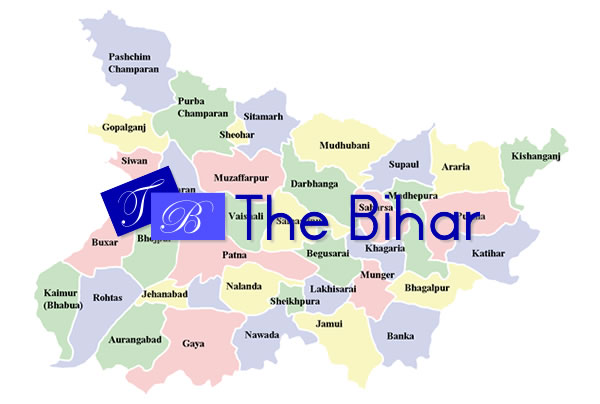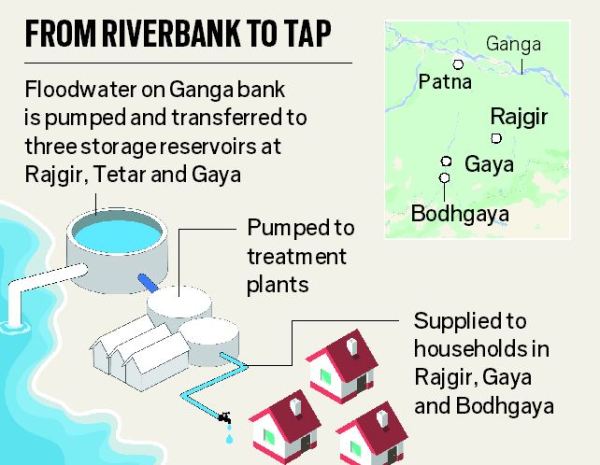Anugrah Narayan Sinha
5 min readDr. Anugrah Narayan Sinha (18 June 1887 – 5 July 1957), known as Bihar Vibhuti, was an Indian statesman who was the first Deputy Chief Minister cum Finance Minister of the Indian state of Bihar (1946–1957). He was also a Member of the Constituent Assembly of India, which was elected to write the Constitution of India and served in its first Parliament as an independent nation. He also held a range of portfolios including Labour, Local Self Government,Public Works, Supply & Price Control,Health and Agriculture. A.N. Sinha, affectionately called “Babu Saheb”,was a very close associate of Mahatma Gandhi during the freedom struggle movement and worked with Bihar Kesari Dr. Sri Krishna Sinha to lead the Gandhian movement in Bihar One of the leading nationalists in the Indian independence movement from Bihar after Dr Rajendra Prasad,he was elected as the Congress Party deputy leader in the state assembly to assume office as first Deputy Chief Minister cum Finance Minister of independentBihar, and re-elected when the Congress Party won Bihar’s first general election with a massive mandate in 1952.
The qualities that gave Dr Anugrah Narayan Sinha a place among the eminent nationalists of his time were moral as well as intellectual.His genuineness, intensity, abhorrence of sham trickery and imposture and his dauntless determination to arrive at facts gave his action a ring of truth.
He was born to Visveshwar Dayal Singh on 18 June 1887 in a family of Poiwan village of the erstwhile Gaya district (today known as Aurangabad) of Bihar.As a lad his patriotic virtues were visible.A brilliant student from the beginning of his academic career, Dr. Anugrah Narayan Sinha obtained his initial education in the village school.From Junior school till graduation he topped the lists at every examination, obtaining an M.A. (History) in 1914 from the prestigious University of Calcutta.He became the Secretary of the Bihar Students Conference founded by Rajendra Prasad and the Chanakya Society of the Patna College.He served as a volunteer in the Patna Congress,With fever on he feverishly worked for its success.In 1915,he was appointed Professor of History at the T.N.B. college in Bhagalpur where he remained, known as an ideal professor, until 1916.He organised relief work when Bhagalpur was raved by floods.He began successfully practising law at Patna High Court.
In 1917, heeding the call of Mahatma Gandhi to the nation, he left his flourishing law practice to join theChamparan Satyagraha movement. The Champaran experiment formed a vital chapter in the development of the Gandhian method in India and he was catapulted to the national stage.He served as a teacher in “Bihar Vidyapeeth” founded by Dr. Rajendra Prasad for motivating young meritorious youths.Among his first students was young Jayprakash Narayan. In 1922 he successfully organized the Gaya Congress.In the following year he became one of the General Secretaries of the All India Congress Committee (AICC).When Rajendra Prasad was elected Chairman of Patna Municipality,Dr. Anugraha Narayan Sinha was elected Vice-Chairman.As he was soon elected Chairman of the Gaya District Board,he resigned.He was the pivotal force behind the Civil Disobedience Movement led by M K Gandhi,in the year 1930 which is considered an important milestone in the history of Indian Nationalism.His patriotism earned him 15 months of rigorous imprisonment in 1933–34.When a massive earthquake affected Bihar on 15 January 1934,Bihar Central Relief Committee was set up on 17 January 1934,under the Presidentship of Dr. Rajendra Prasad and Dr. Anugraha Narayan Sinha became its Vice-President.He took the task of raising funds to help the people and the relief and rehabilitation work was organised in an elaborate and efficient manner.He was elected as a member of the Central Council in 1935 from Sahabad-cum-Patna Constituency with a massive margin.He became a member of the Bihar Legislative Assembly in 1936. In the provincial autonomy granted by British, under the Government of India Act of 1935, the first Congress ministry was sworn in on 20 July 1937 and he became the Deputy Premier cum Finance Minister of Bihar province.He and Premier Dr. Sri Krishna Sinha disagreed with the then Governor Maurice Garnier Hallett on the issue of the release of political prisoners and both resigned.The Governor had to give in and they again resumed their offices. But they again resigned in 1939, as did all Congress governments in the country, over the question of involving India in the Second World War without the consent of the Indian people.
He was among the first freedom fighters to respond to Gandhiji’s call for Satyagraha in 1940–41. He was arrested by the British authorities and imprisoned in the Hazaribagh Central Jail in 1942. In 1944 he was released and devoted himself to serving the epidemic ridden people.
After independence he dedicated himself to the all round development of Bihar as Finance Minister and as the Deputy Chief Minister of Bihar.
The first Bihar Government, both in 1937 and 1946, was characterised by the values of the Mahatma Gandhi. Its two eminent leaders Sri Babu (Sri Krishna Sinha) and Anugrah Babu (Dr Anugrah Narayan Sinha) were nationalists of unimpeachable integrity and great public spirit. They ran an exemplary government in Bihar. Almost all the development projects needed for the state of Bihar were done by the leadership pair of Sinha and Dr A N Sinha.It included several river valley projects right from Koshi, Aghaur and Sakri to other such river projects.The first five-year plan period was given to the development in rural development works mainly mainly in the agricultural sector. In fact, Bihar became the top state in the country’s first five-year plan and it was announced by Dr A N Sinha in the assembly.The then Prime Minister of India Jawaharlal Nehru sent Paul H. Appleby to assess the administration in states and in his famous report,he described Bihar as the best governed state in India mostly due to the excellent leadership of Dr S K Sinha and Dr Anugrah Narayan Sinha.
Since the second five year plan period,Anugrah Babu spearheaded the process of rapid industrialization of Bihar and and bought several industries for the all round development of the state.He served India’s international interests.He successfully led the Indian Food and Agriculture delegation to Nepal and also the Indian delegation to the International Labour Organization (ILO) in Canada and Switzerland. He also actively led a number of Government and voluntary organisations in India and abroad.
Along with his close colleague in the Indian independence movement Bihar Kesari Dr. Sri Krishna Sinha, the first Chief Minister of Bihar, he is considered one of the architects of modern Bihar.His younger son Satyendra Narayan Sinha (who was affectionately called “Chhote Saheb”) also became a prominent freedom fighter leader and later becameChief Minister of Bihar. His grandson Nikhil Kumar, a former IPS,is current Governor of the Indian state of Nagaland. Dr. Sinha served the state continuously,barring war years(Second World War 1939–1945),as the Deputy Chief Minister cum Finance Minister from the time of the first Congress Ministry in 1937 till his death on 5 July 1957. The Department of Posts released a commemorative stamp in his memory.



Bihar Vibhuti Dr Anugraha Narayan Sinha was one of the outstanding nationalists that Bihar produced during the epoch making Gandhian satyagrha of 1917.Since then,till the attainment of Independence in 1947;Dr Rajendra Prasad & Dr Anugraha Narain Sinha remained two tallest pillars of Bihar’s nationalist movement.A young Lok Nayak JayaPrakash Narayan(JP to one and all) was taught by Anugraha babu during his student years and JP’s association with stalwarts like Rajendra Babu,Sacchidananda Sinha & DR A N Sinha shaped his political and social personality.Very few people know that Dr Anugrah Narain was chosen as Dictator(Prime Minister designate of Bihar province) and hosted the Indian tricolour at capital Patna on 26 January 1931.Though,he gave up the idea of becoming Prime Minister(Premier) and later first Chief Minister of Bihar for his childhood friend and another eminent nationalist Dr S K Sinha;he was right there in the shaping of a modern Independent Bihar and helped the state become India’s top state in 1950s.He was offered the post of Finance Minister in Union Council of Ministers headed by Nehru but he politely denied because a newly Independent Bihar needed both Bihar Kesari(SK Sinha) and Bihar Vibhuti(Dr AN Sinha) to establish its entire governance matrix and all around infrastructure.It’s such a pity that the legendary son of Bihar has been shabbily treated by today’s generation of politicos! His 125th Birth Anniversary falls next year and the state government is yet to announce the formation of government committee to commemorate his life and works
Dr Anugraha Narayan Sinha was among the architects of modern independent Bihar;when Mahatama Gandhi begun his historic satygraha in India from Bihar;Anugraha Babu was right there with him along with Rajendra Prasad(future President of India).They toured on bicycles for over 30 kms every day and mobilised people’s support against the might of British rule.Today’s younger generation of politicos should take inspiration from our founding fathers and strive for a prosperous and developed Bihar.